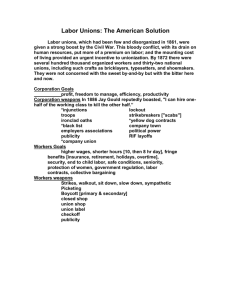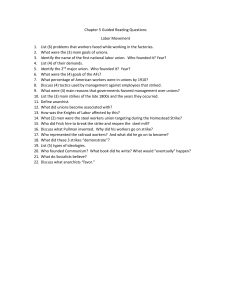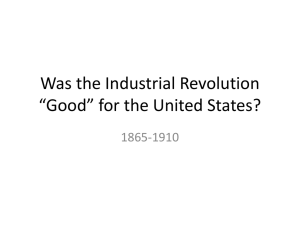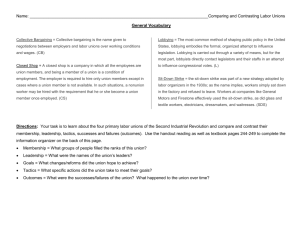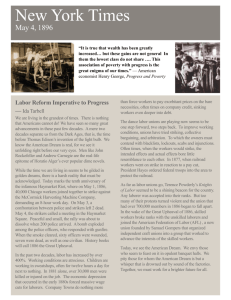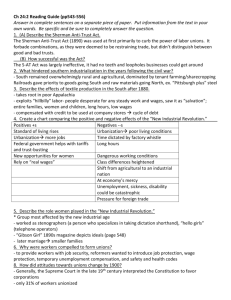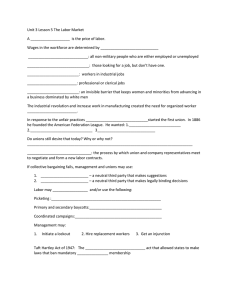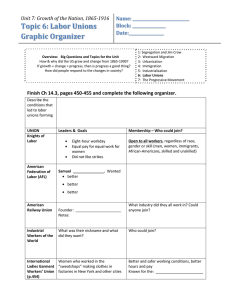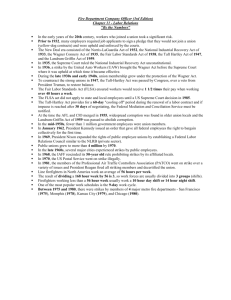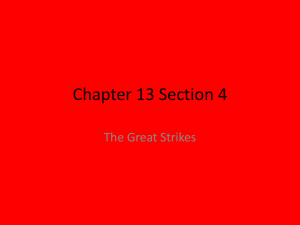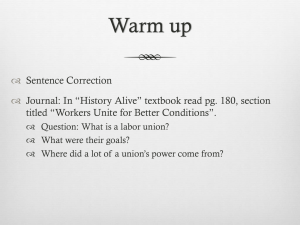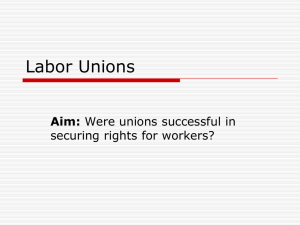Comparing and Contrasting Labor Unions
advertisement
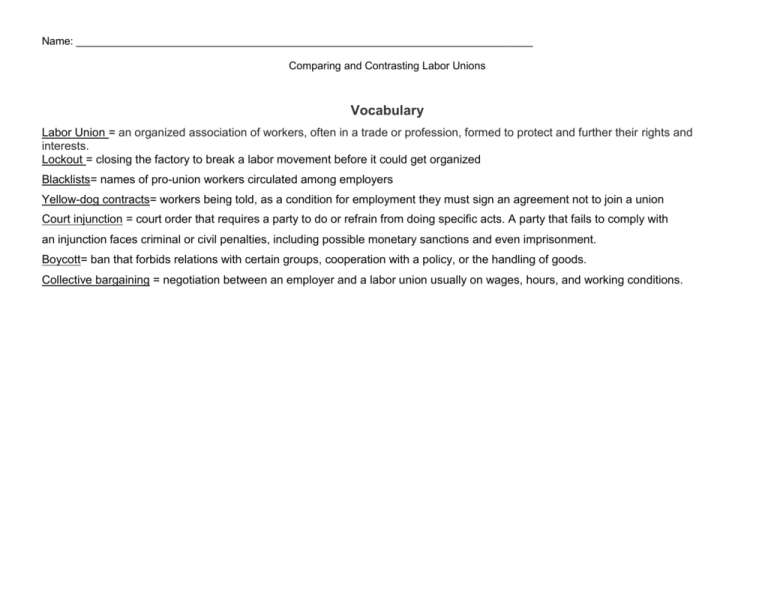
Name: _____________________________________________________________________________ Comparing and Contrasting Labor Unions Vocabulary Labor Union = an organized association of workers, often in a trade or profession, formed to protect and further their rights and interests. Lockout = closing the factory to break a labor movement before it could get organized Blacklists= names of pro-union workers circulated among employers Yellow-dog contracts= workers being told, as a condition for employment they must sign an agreement not to join a union Court injunction = court order that requires a party to do or refrain from doing specific acts. A party that fails to comply with an injunction faces criminal or civil penalties, including possible monetary sanctions and even imprisonment. Boycott= ban that forbids relations with certain groups, cooperation with a policy, or the handling of goods. Collective bargaining = negotiation between an employer and a labor union usually on wages, hours, and working conditions. National Labor Union 1866-1874 Knights of Labor 1869-late 1800s American Federation of Labor 1886 - present City trade assemblies, national Membership trade unions, reform organizations Men, women, whites, blacks, skilled, unskilled, citizens, immigrants Skilled workers from many industries, Leadership William Sylvis, David Davis Uriah Stevens, Terence Powderly, James Sovereign Samuel Gompers, William Greene Goals Better working conditions, 8hour work day, equal pay for equal work Abolishing child labor, equal pay for equal work, 8-hour work day, creation of a Bureau of Labor Statistics in the federal government Higher wages, shorter hours, other economics issues Tactics Outcomes Distanced itself from communist and socialist Arbitration, boycotts, organizations, negotiated labor cooperatives, though they did contracts, strike only when Legislative reform, lobbying, no not support strikes they did use necessary, focused on day-tostrikes strikes sometimes, legislative day working conditions instead pressure (used after of social or business practices, Haymarket) collective bargaining, closed shop Congress passed labor laws, but the Supreme Court Second strike against Jay overruled some, merged with Transformed into the National Gould’s railroad empire and the CIO (Congress of Industrial Labor Reform Party, the Haymarket Square Riot in Organizations) in 1955, did nominated David Davis for May 1886 destroyed the achieve better working president, lost the 1872 reputation and support of the conditions (minimum wage, election, was disbanded in union, most members joined maximum working hours, 1873 the AFL or local trade unions workers compensation, end to comprised of skilled workers child labor = all during the 1930s) Industrial Workers of the World 1905-present Socialists and trade unions, unskilled and exploited workers, immigrants, minorities, women, migrant farmers Bill Haywood, Eugene V. Debbs, Mother Jones, Daniel De Leon One big union to control the means of production and distribution (Marxist/communist struggle), abolish divisions among workers, achieve fair and equal working conditions and government support for labor Direct action, strikes, (general strike in the future to overthrow the capitalistic system, smaller strikes in the short term), educational campaigns, songs, graphics, speeches, literature, sit-down strike, chain picketing, car caravans Civil rights advances, fought against the government for protection of 1st Amendment rights, anti-military and antiwar stance caused them to be unpopular in WWI, legacy of organizing tactics for groups, led to the mass union of the CIO and inclusion of women in labor leadership and membership
